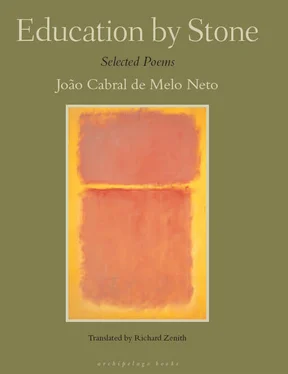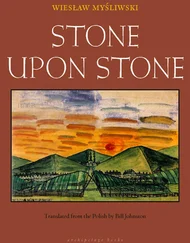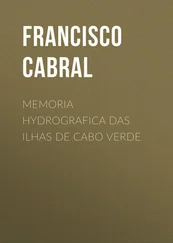Tourist Pitch for Recife
Here the sea is a mountain
smooth and blue and round,
taller than the coral reefs
and shallow swamps to the south.
From the sea you can extract
(from the sea that laps our coast)
a thread of precise light,
mathematical or metallic.
In the city itself
old lanky row houses
rub their limestone shoulders
on both sides of a river.
From these houses you can learn
a lesson of long experience:
a delicate equilibrium
in writing, as in architecture.
And from this indigent river,
this blood-mud that meanders
with its almost static march
through sclerosis and cement,
and from the people who stagnate
in the river’s mucous membranes,
entire lives rotting
one by one to death,
you can learn that man
is always the best measure,
and that the measure of man
is not death but life.
O vento no canavial
Não se vê no canavial
nenhuma planta com nome,
nenhuma planta maria,
planta com nome de homem.
É anônimo o canavial,
sem feições, como a campina;
é como um mar sem navios,
papel em branco de escrita.
É como um grande lençol
sem dobras e sem bainha;
penugem de moça ao sol,
roupa lavada estendida.
Contudo há no canavial
oculta fisionomia:
como em pulso de relógio
há possível melodia,
ou como de um avião
a paisagem se organiza,
ou há finos desenhos nas
pedras da praça vazia.
Se venta no canavial
estendido sob o sol
seu tecido inanimado
faz-se sensível lençol,
se muda em bandeira viva,
de cor verde sobre verde,
com estrelas verdes que
no verde nascem, se perdem.
Não lembra o canavial
então, as praças vazias:
não tem, como têm as pedras,
disciplina de milícias.
É solta sua simetria:
como a das ondas na areia
ou as ondas da multidão
lutando na praça cheia.
Então, é da praça cheia
que o canavial é a imagem:
vêem-se as mesmas correntes
que se fazem e desfazem,
voragens que se desatam,
redemoinhos iguais,
estrelas iguais àquelas
que o povo na praça faz.
The Wind in the Canefield
There is in the canefield
no plant with a name,
no plant called Maria,
no plant with a man’s name.
The canefield is anonymous,
plain-faced like the prairie,
like an ocean without ships,
a blank sheet of paper.
It is like a large bedsheet
without folds or hems,
a girl’s downy skin in the sun,
clothes spread out to dry.
Yet hidden in the canefield
there is a physiognomy,
as in a watch’s ticking
there is a potential melody,
as from a plane the landscape
reveals an organization,
as the stones of an empty square
delineate graceful patterns.
When wind blows in the canefield
spread out under the sun,
its inanimate fabric
becomes a sensitive bedsheet:
it changes into a living
flag of green on green,
with green stars born
and lost in the greenness.
Then the canefield no longer
resembles an empty square:
it does not have, like the stones,
the discipline of armies.
Its symmetry is jagged,
like that of waves on sand
or of the waves of people
vying in the crowded square.
Yes, the crowded square
is what the canefield mirrors,
with the same kinds of currents
arising and subsiding,
the same eddies and whirlpools
that can break out anywhere,
the same stars as those formed
by the people in the square.
Cemitério pernambucano
(
Toritama
)
Para que todo este muro?
Por que isolar estas tumbas
do outro ossário mais geral
que é a paisagem defunta?
A morte nesta região
gera dos mesmos cadáveres?
Já não os gera de caliça?
Terão alguma umidade?
Para que a alta defesa,
alta quase para os pássaros,
e as grades de tanto ferro,
tanto ferro nos cadeados?
— Deve ser a sementeira
o defendido hectare,
onde se guardam as cinzas
para o tempo de semear.
Cemetery in Pernambuco
(
Toritama
)
Why this great wall?
Why shut off these graves
from the other, larger
charnel, the dead landscape?
In this region do the corpses
themselves breed death? Does death
no longer breed them, dry as rubble?
Do they contain some moisture?
Why this high defense,
almost too high for the birds,
and the gates with so much iron,
so much iron in the locks?
This must be the seedbed,
the well-defended acre,
where the ashes are preserved
until the time for sowing.
Encontro com um poeta
Em certo lugar da Mancha,
onde mais dura é Castela,
sob as espécies de um vento
soprando armado de areia,
vim surpreender a presença,
mais do que pensei, severa,
de certo Miguel Hernández,
hortelão de Orihuela.
A voz desse tal Miguel,
entre palavras e terra
indecisa, como em Fraga
as casas o estão da terra,
foi um dia arquitetura,
foi voz métrica de pedra,
tal como, cristalizada,
surge Madrid a quem chega.
Mas a voz que percebi
no vento da parameira
era de terra sofrida
e batida, terra de eira.
Não era a voz expurgada
de suas obras seletas:
era uma edição do vento,
que não vai às bibliotecas,
era uma edição incômoda,
a que se fecha a janela,
incômoda porque o vento
não censura mas libera.
A voz que então percebi
no vento da parameira
era aquela voz final
de Miguel, rouca de guerra
(talvez ainda mais aguda
no sotaque da poeira;
talvez mais dilacerada
quando o vento a interpreta).
Vi então que a terra batida
do fim da vida do poeta,
terra que de tão sofrida
acabou virando pedra,
se havia multiplicado
naquelas facas de areia
e que, se multiplicando,
multiplicara as arestas.
Naquela edição do vento
senti a voz mais direta:
igual que árvore amputada,
ganhara gumes de pedra.
Encounter with a Poet
In a certain place in La Mancha
where the Castilian plain is hardest,
in the midst of a stiff blowing
wind armed with sand,
I happened upon the presence,
severer than I had imagined,
of one Miguel Hernández,
a farmer of Orihuela.
The voice of this Miguel,
hanging between word and earth,
the same uncertain earth
houses in Fraga are made of,
was once an architecture,
a metric voice of stone,
crystallized the way Madrid
appears when you first arrive.
But the voice I discerned
in the highland wind
was of tortured, beaten earth,
the earth of a threshing floor —
not the expurgated voice
of the poet’s selected works
but an edition of the wind
not found in libraries.
It was a disturbing edition,
to which many shut the window
(disturbing because the wind
frees rather than censures).
The voice which I heard
in the wind of the highland
was Miguel’s final voice
gone hoarse from war
(perhaps even harsher
in the dialect of dust;
perhaps more mutilated
in the wind’s interpretation).
I saw that the beaten land
of the end of the poet’s life,
land turned to stone
from so much suffering,
had multiplied itself
in those knives of sand
and in that multiplication
had multiplied its edges.
In that edition of the wind
the voice directly touched me —
it had gained blades of stone,
like an amputated tree.
Cemitério pernambucano
(
São Lourenço da Mata
)
É cemitério marinho
mas marinho de outro mar.
Foi aberto para os mortos
que afoga o canavial.
As covas no chão parecem
as ondas de qualquer mar,
mesmo as de cana, lá fora,
lambendo os muros de cal.
Pois que os carneiros de terra
parecem ondas de mar,
não levam nomes: uma onda
onde se viu batizar?
Também marinho: porque
as caídas cruzes que há
são menos cruzes que mastros
quando a meio naufragar.
Читать дальше










